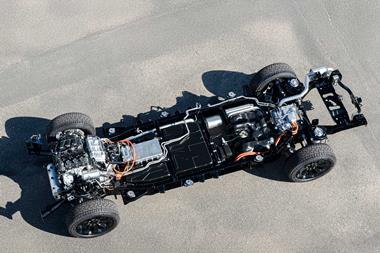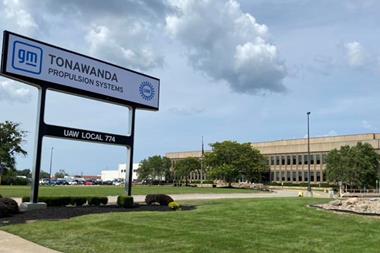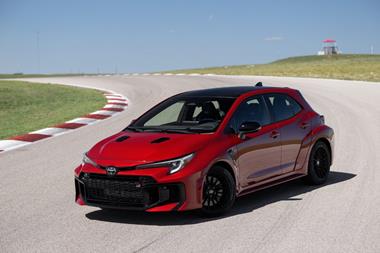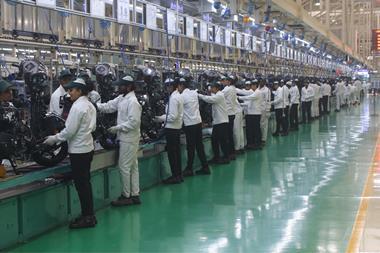 By expanding its production in Thailand, Indonesia and Malaysia, SAIC hopes to break into the market share of the dominant Japanese OEMsGiven their mushrooming domestic market and traditional heavy dependence on imported European, US or Japanese technology, China’s car companies have, until recently, developed only a limited presence outside the country. However, this focus on the domestic market is now expanding to a wider worldview and the development of manufacturing activities outside China.
By expanding its production in Thailand, Indonesia and Malaysia, SAIC hopes to break into the market share of the dominant Japanese OEMsGiven their mushrooming domestic market and traditional heavy dependence on imported European, US or Japanese technology, China’s car companies have, until recently, developed only a limited presence outside the country. However, this focus on the domestic market is now expanding to a wider worldview and the development of manufacturing activities outside China.
While Geely has expanded internationally via the acquisition of Volvo, London Taxi Company and most recently Proton, other Chinese vehicle-makers are growing their own brands’ business in South-East Asia through investment in new plants and dealer networks. Foton will soon build a truck plant in Thailand, while BAIC is planning an electric-vehicle plant in Malaysia. Meanwhile, SAIC, which has long-established joint ventures with both GM and Volkswagen in China, also has rapidly growing operations in Thailand, Malaysia and Indonesia.
Of greatest significance at the moment is what the company in doing in Thailand, where in November 2016 it started constructing its second plant in the country, at the Hemeraj Eastern Seaboard Industrial Estate, Chonburi, to make MG cars. The new factory, first announced in May last year, will weld and paint bodies, and then carry out full final trim and assembly operations. The factory is being built through SAIC’s joint venture with local conglomerate Charoen Pokphand Group, which was established in 2012 with SAIC as the majority (51%) shareholder.
SAIC’s first Thai plant, near Rayong, began production in 2014 but has an installed capacity of just 50,000 units a year, all of which was originally destined for the local market. To date, however, sales in the country have failed to fully utilise the capacity, with SAIC selling only 3,800 vehicles in 2015 and around double this number in 2016. SAIC’s annual sales in Thailand are set to grow further through the expansion of its dealer network in 2016 from 60 to 90 outlets, but clearly it is still some way off target.
Despite not reaching its existing capacity, SAIC now plans to turn its Thai operations into a regional right-hand-drive production hub. The second plant will launch with a capacity of 200,000 units a year, but in the long run the company intends to make as many as 300,000 vehicles per annum in the country. This growth strategy is being supported by investment of around 30 billion baht ($881.6m).
Looking beyond ThailandGiven the dominance of Japanese producers in Thailand in both production and sales, exports will be central to SAIC achieving full utilisation of its new facility, and indeed its existing plant. Exports from the new factory are expected to start in 2019, with Indonesia and Australia believed to be the first target markets. Other regional markets taking right-hand drive models are: Brunei, East Timor, Malaysia, Singapore, the Indian subcontinent and the Himalayan states between India and China. Subject to trade agreements providing enough access, there is plenty of potential for SAIC to exploit.
In addition to its plants in Thailand, SAIC is expanding in Indonesia and Malaysia. The company has agreed to assemble MG models in Malaysia in association with Weststar Maxus. The Maxus name derives from the Malaysian company’s origins as a local assembly partner with the now defunct British van manufacturer, LDV, which produced the Maxus van before its demise. Maxus is now owned by SAIC itself, which is currently using it for a new pick-up truck range.
The recent Thai and Malaysian developments need to be seen as following on from SAIC’s announcement in 2015 of a substantial Indonesian manufacturing site, where half of the 600,000 sq.m have been given over to component suppliers. Developed in partnership with GM, the plant at Cikarang, West Java, has a capacity of 120,000 vehicles a year and will produce models with the Wuling badge, which SAIC regards as its entry-level offering. The project had been in some doubt following GM’s recent withdrawal from Europe and India, but in July the American OEM announced that operations had started. The first product coming off the lines is the Wuling Confero S MPV, which will be sold throughout Indonesia from Q3 2017.
SAIC is now the leading Chinese manufacturer moving into markets which have until now been dominated by Japanese brands. Given the low levels of vehicle ownership in much of South-East Asia and the likely price competitiveness of the Chinese vehicles, SAIC may well succeed in carving out a niche for itself in Thailand, Indonesia and more widely across the region.




































